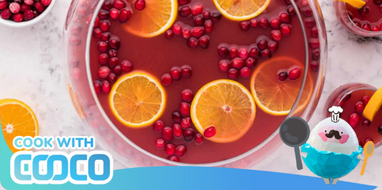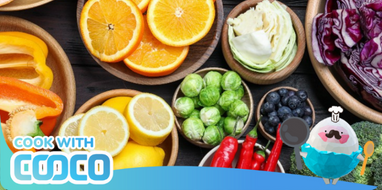The Definitive Guide to Healthy Grocery Shopping: Smart Tips for Nutrient-Dense Choices
Are you tired of wandering aimlessly through the grocery store, unsure of which foods to add to your cart for a healthier diet? You're not alone. Grocery shopping can be a daunting task, especially when faced with countless food options, some with deceiving packaging that makes it hard to distinguish between healthy and unhealthy choices. In this comprehensive guide, we'll provide you with expert advice on how to navigate the grocery store aisles with confidence, create a smart shopping list, and stock up on essentials to make your grocery shopping experience more efficient and nutritious.
Preparing for Your Grocery Trip
Before you step foot in the grocery store, it's essential to have a plan in place. While some people can wing it and shop without a list, most of us benefit from a little preparation. Here's what you can do to ensure a successful shopping trip:

1. Create a Healthy Shopping List
A well-thought-out grocery list is your secret weapon for making healthier choices while shopping. Research shows that having a list can help you stay on track and make more nutritious selections. When crafting your list, focus on whole, nutrient-dense foods, such as:
Fruits: Apples, blueberries, clementines, grapefruits, avocados
Nonstarchy Vegetables: Broccoli, asparagus, onions, spinach, peppers, zucchini
Starchy Vegetables: Sweet potatoes, baby red potatoes, butternut squash
Beans and Grains: Chickpeas, brown rice, black beans, quinoa
Proteins: Eggs, canned salmon, skin-on chicken breast, pea protein powder
Frozen Foods: Frozen mixed berries, frozen kale
Nuts and Seeds: Roasted almonds, pumpkin seeds, natural peanut butter
Dairy and Nondairy Substitutes: Cashew milk, coconut milk, feta cheese, full-fat Greek yogurt
Condiments: Olives, sun-dried tomatoes, salad dressing, olive oil, pesto, salsa
Drinks: Unsweetened coconut water, sparkling water
Miscellaneous: Ground coffee, dried fruit, dark chocolate, banana plantain chips, shredded unsweetened coconut
Keep in mind that you won't need to purchase shelf-stable items like peanut butter and bulk grains every time you shop. We'll cover how to stock your kitchen with long-lasting items later in this guide.
2. Plan a Weekly Menu

If you prefer a more structured approach, consider bringing a weekly menu to the store instead of a regular shopping list. This menu should outline the ingredients needed for the meals you plan to cook during the upcoming week. If you're into meal prepping, you can even print out the recipes you intend to make and shop based on these ingredient lists.
Keep in mind that if you're transitioning from eating out or ordering in most of your meals to preparing them at home, it's okay to start small. Begin with just a few meals each week and gradually increase your homemade meal repertoire as it becomes a part of your routine.
Navigating the Grocery Store
Once you're at the store, it's essential to stay focused and make informed choices to maintain a healthy grocery shopping experience. Here's what you should prioritize:
1. Emphasize Nutrient-Dense Foods
Your primary focus should be on purchasing whole, nutrient-dense foods. These are typically found along the perimeter of the store and include fresh fruits, vegetables, proteins, and other perishables. However, don't neglect the center aisles entirely, as you can still find many healthy choices there, such as bulk grains, nuts, seeds, nut butters, canned foods, condiments, and frozen foods.
While some aisles contain highly processed items, like refined snacks and soft drinks, others offer a mix of nutritious and highly refined options. Be strategic by starting your shopping journey along the perimeter for perishable items and then moving to the inner aisles for pantry staples.
2. Master the Art of Label Reading
Not all packaged items are unhealthy, but it's crucial to become skilled at deciphering food labels to make informed choices. Even some nutritious packaged foods may have a long list of ingredients, so take a closer look at the ingredient label before making a decision.
Pay special attention to the added sugar content of items, as excessive sugar consumption can have adverse effects on your health, including an increased risk of heart disease, mental health disorders, and type 2 diabetes. Look for products with less than 6 grams (1.5 teaspoons) of added sugar per serving.
While label reading can be confusing, you can find a detailed guide on how to read nutrition labels.
3. Building a Nutrient-Dense Grocery Cart
Now that you've armed yourself with knowledge, let's envision what a healthy grocery shopping cart might look like. Remember that everyone has unique dietary needs, but a well-rounded cart should include nutrient-dense foods that nourish your body and provide the essential nutrients it needs to thrive. Here's a sample grocery cart filled with healthy choices:
Nonstarchy Vegetables: Cauliflower, asparagus, broccoli, sweet peppers, onions, garlic, bell peppers, greens, leeks, mushrooms
Fruits: Oranges, bananas, apples, grapefruit, lemons, blueberries, pineapple, avocados
Proteins: Eggs, fish, chicken, ground turkey, tofu
Starchy Vegetables: Sweet potatoes, potatoes, winter squash
Grains and Legumes: Quinoa, oats, brown rice, dried black beans, buckwheat, red lentils, barley, farro
Nuts, Seeds, and Nut Butter: Pumpkin seeds, macadamia nuts, almonds, natural peanut butter
Canned Foods: Canned salmon, sardines, canned beans, canned pumpkin puree, diced tomatoes, marinara sauce
Oils and Condiments: Olive oil, salad dressing, avocado oil, salsa, apple cider vinegar, balsamic vinegar, dried spices, honey, maple syrup
Dairy and Nondairy Products: Full-fat Greek yogurt, cheddar cheese, goat cheese, cashew milk, coconut yogurt
Snack Foods: Dark chocolate chips, trail mix, unsweetened dried fruit, hummus
Frozen Foods: Frozen raspberries, frozen shrimp, frozen kale, Ezekiel bread
Beverages: Unsweetened seltzer, herbal tea bags, ground coffee
This list serves as a general guide to building a nutrient-dense cart, but it's not exhaustive or set in stone. The key is to prioritize foods that make you feel good and provide the nutrients your body needs while allowing room for occasional indulgences like chips, ice cream, or other favorite treats. Remember, a healthy diet can still include occasional indulgences without sacrificing overall well-being.
Grocery shopping doesn't have to be a stressful experience. By preparing a thoughtful shopping list or menu, taking stock of your kitchen, and stocking up on long-lasting staples, you can make your







